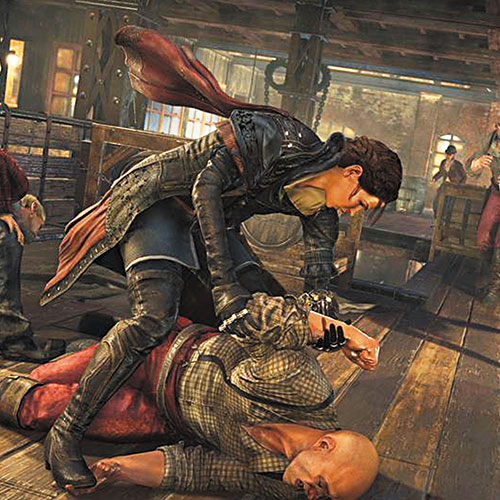PaigeFTW: Taking a Leap of Faith — In Media Res

By nature, every video game must cater to both longtime fans and total newcomers. Let me put it this way: If you want to watch a movie that came out in the 1940’s, odds are you can stream it on your computer without too much fuss today. No need to find an old-timey projector or a VHS player.
On the other hand, wanting to experience the entire Assassin’s Creed series would require you own at least three different consoles (or a very up-to-date gaming computer with pirated emulators). If you really want to play Assassin’s Creed: Bloodlines today, you’ve got to go out and find a PSP. Old video games don’t adapt to new mediums very well.
The industry has settled into the flow of time with occasional attempts at backwards compatibility or selective remakes and remasters, but by and large, you’ll inevitably have to jump into new franchises in media res — right in the middle.
I’m playing Assassin’s Creed Syndicate right now — I was seduced by Victorian top hats and cane swords — and while I love it very much, I also have exactly zero idea what is going on outside of me revolutionizing child labor and busting up gangs. The modern-day bits I patiently sit through, politely confused. I’ve read the in-game glossary and done some Googling, but this whole Abstergo-Animus-Juno-whatever thing goes right over my head.
Jumping right into a series in its ninth installment — when I’ve played maybe two hours of Assassin’s Creed, like, this one time six years ago — can have quite the learning curve.
It’s a common problem these days for game developers. These split audiences are difficult to cater to because they have completely different wants and needs. It’s for this reason that I often feel a lot of video game storytelling suffers, quite a bit — once you’re really into the mythos, it’s hard for outsiders to jump right in without feeling alienated.
So, how do games tell effective stories? We’ll dive into that next week …











